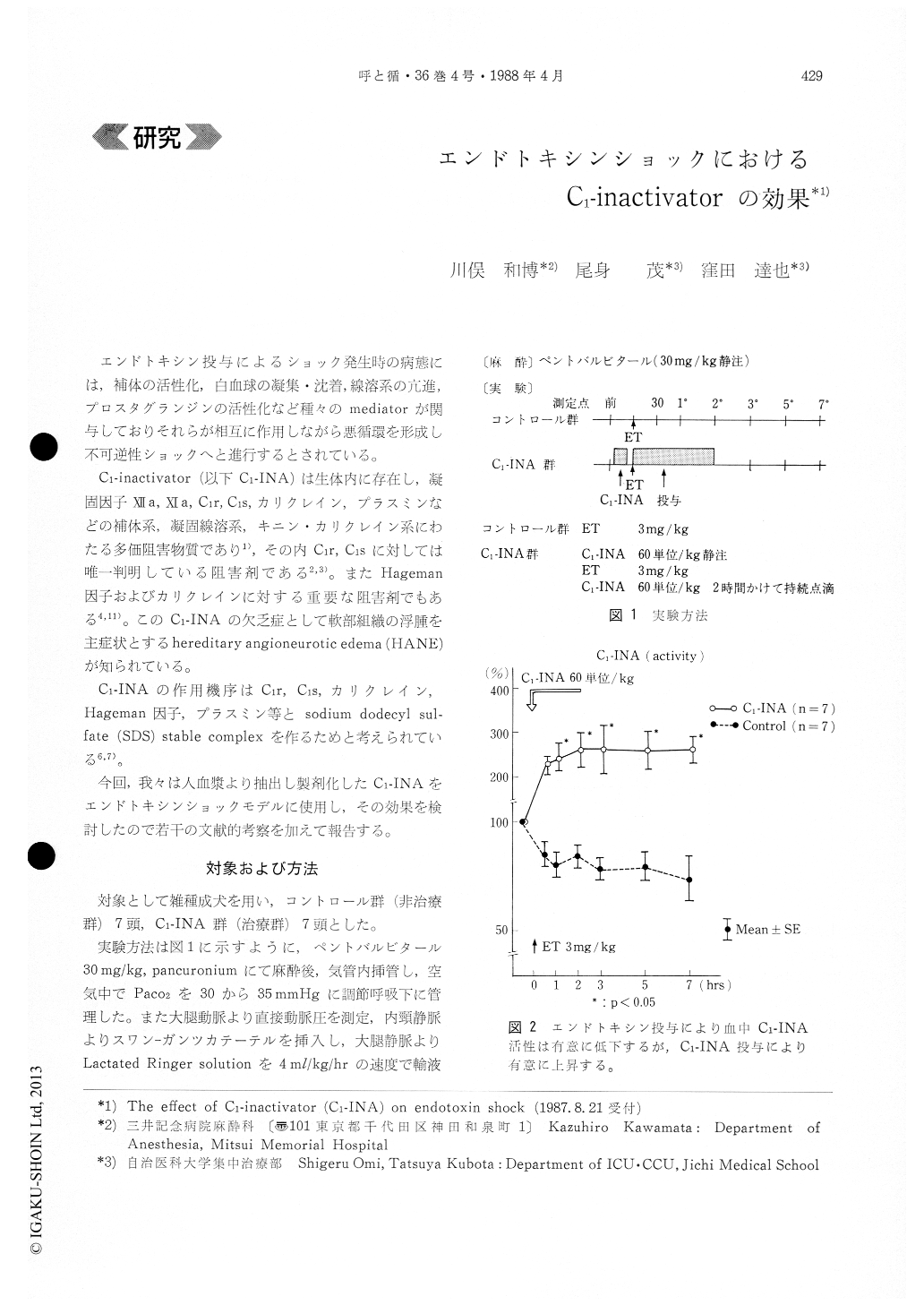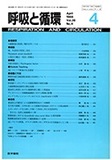Japanese
English
- 有料閲覧
- Abstract 文献概要
- 1ページ目 Look Inside
エンドトキシン投与によるショック発生時の病態には、補体の活性化,白血球の凝集・沈着,線溶系の亢進,プロスタグランジンの活性化など種々のmediatorが関与しておりそれらが相々者に作用しながら悪循環を形成し不可逆性ショックへと進行するとされている。
C1-inactivator (以下C1—INA)は生体内に存在し,凝固因子XII a,XI a,C1r,C1s,カリクレイン、ブラスミンなどの補体系,凝固線溶系,キニン・カリクレイン系にわたる多価阻害物質であり1),その内C1r,C1sに対しては唯一判明している阻害剤である2,3)。またHageman因子およびカリクレインに対する重要な阻害剤でもある4,11)。このC1-INAの欠乏症として軟部組織の浮腫を主症状とするhereditary angioneurotic edema (HANE)が知られている。
C1-INAの作用機序はC1r,C1s,カリクレイン,Hageman因子,プラスミン等とsodium dodecyl sul-fate (SDS) stable complexを作るためと考えられている6,7)。
今回,我々は人血漿より抽出し製剤化したC1-INAをエンドトキシンショックモデルに使用し,その効果を険討したので若干の文献的考察を加世えて報告する。
This study was performed to demonstrate the effect of C1-inactivator (C1-INA) on the endotoxin shock model.
16 dogs were devided into a control and C1-INA groups. 3 mg/kg endotoxin was only given to the control group. To the C1-INA group, 60 units/kg of C1-INA was given before and after the endotoxin administration.
Decreases in platelet counts and serum C1-INA activity were observed in the both groups, but these decreases in the C1-INA group were significantly less than in the control group. Cardiac function, acidbase balance and blood coagulation (PT, APTT) were also disturbed less in the C1-INA group.
From these results, we found that serum C1-INA activity decreased in the endotoxin shock probably secondary to the activation of the classical pathway of the complement system, and significant inhibition of platelet reduction by C1-INA administration can also be explained by its effect via mainly comple-ment inactivation. There is a possibility that C1-INA may be used for the treatment of endotoxin shock.

Copyright © 1988, Igaku-Shoin Ltd. All rights reserved.


